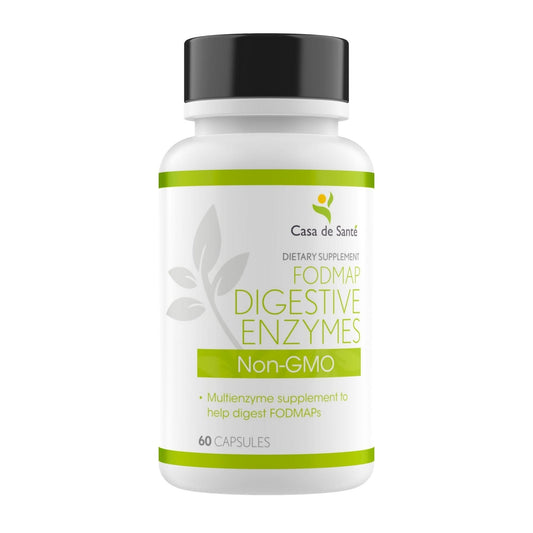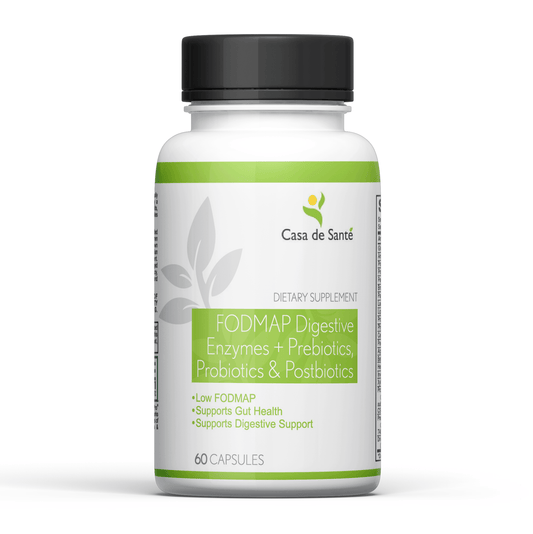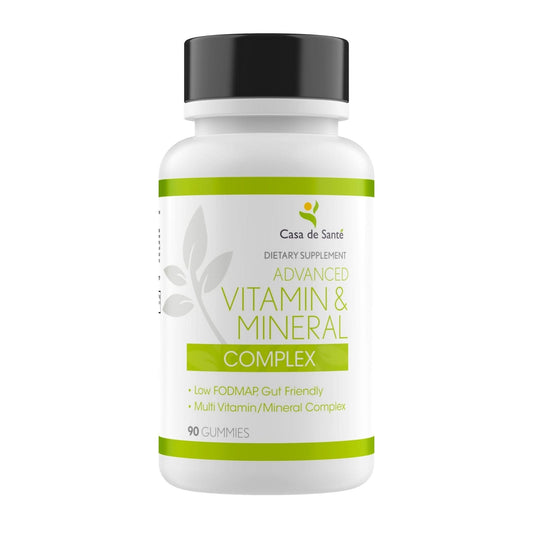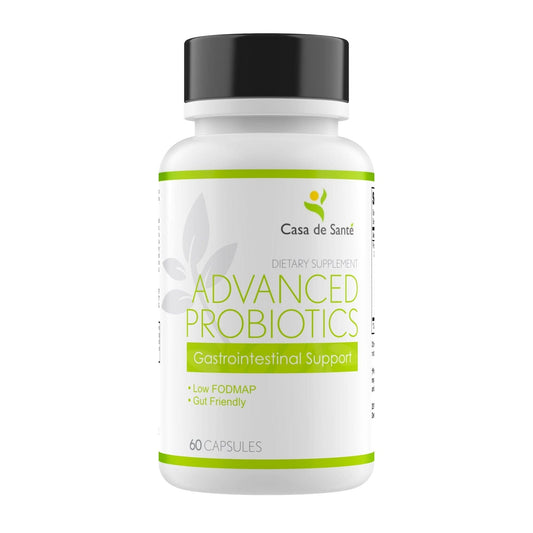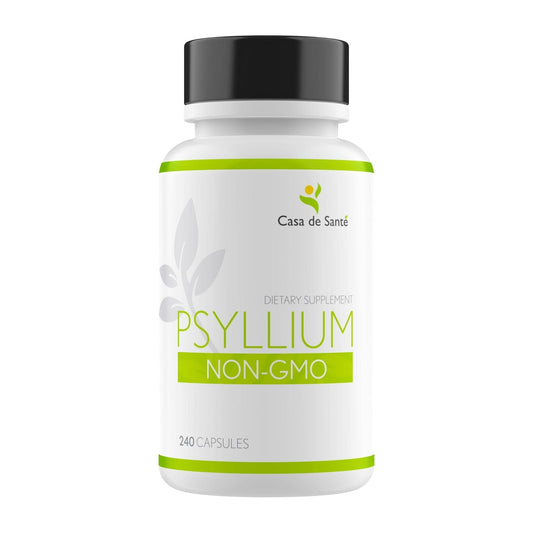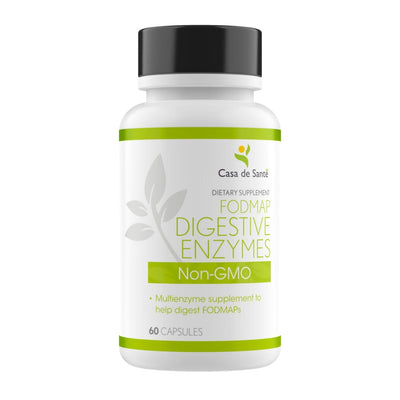Exploring FODMAP Foods by Category: A Comprehensive Guide for IBS Management
If you're trying to manage IBS, understanding FODMAP foods is key. These are specific carbs that can cause stomach issues for some folks. By getting to know which foods fall into low or high FODMAP categories, you can better control your symptoms. This guide will break down FODMAP foods by type, helping you choose the right ones for your diet.
Key Takeaways
- FODMAPs are certain carbs that can upset your stomach, especially if you have IBS.
- Knowing which fruits and veggies are low in FODMAPs can help you eat healthier without discomfort.
- Grains like oats and rice are generally safe, while wheat and rye might cause issues.
- Lactose-free dairy and non-dairy options can be better for those sensitive to lactose.
- Low FODMAP sweeteners and condiments can make a big difference in managing IBS symptoms.
Understanding FODMAP Foods by Category
What Are FODMAPs?
FODMAPs are a group of carbohydrates that some folks find hard to digest. They hang around in foods we eat every day. When these carbs hit your gut, they can draw in water and start to ferment, which sometimes leads to gas and bloating. The term FODMAP stands for Fermentable Oligosaccharides, Disaccharides, Monosaccharides, and Polyols. Each of these has its own quirks:
- Oligosaccharides are found in foods like wheat, onions, and garlic.
- Disaccharides, such as lactose, pop up in dairy products.
- Monosaccharides include fructose found in some fruits and sweeteners.
- Polyols are sugar alcohols found in certain fruits and vegetables.
The Role of FODMAPs in IBS
For those dealing with Irritable Bowel Syndrome (IBS), FODMAPs can be tricky. Not everyone with IBS reacts to these carbs, but for those who do, it can mean discomfort. A low FODMAP diet might help manage symptoms like bloating, gas, and tummy pain. It’s about finding what works for you since everyone’s gut is different.
How to Identify FODMAP Foods
Spotting FODMAPs in your diet isn’t always straightforward. Here’s a simple way to start:
- Read Labels: Check for ingredients like high-fructose corn syrup or artificial sweeteners.
- Know Your Foods: Familiarize yourself with foods high in FODMAPs, like certain fruits and veggies.
- Trial and Error: Sometimes, it’s about testing foods and seeing how your body reacts.
Living with IBS and managing FODMAP intake is a personal journey. It’s not about cutting out everything but finding a balance that keeps your gut happy.
Low FODMAP Fruits and Vegetables
Fruits to Include in Your Diet
When it comes to managing IBS, picking the right fruits can make a big difference. Low FODMAP fruits are easier on the gut and can help you avoid those uncomfortable symptoms. Here are some fruits that you can enjoy without worry:
- Bananas (make sure they're firm)
- Blueberries
- Kiwi
- Oranges
- Strawberries
These fruits are not only tasty but also packed with vitamins and minerals. Remember, portion sizes matter, so keep an eye on how much you're eating.
Vegetables That Are IBS-Friendly
Vegetables are a crucial part of any diet, and luckily, there are plenty of low FODMAP options to choose from. Some veggies that fit the bill include:
- Bell peppers (green)
- Carrots
- Cucumbers
- Lettuce
- Spinach
These vegetables are not just IBS-friendly; they're also versatile and can be used in a variety of dishes. You can steam them, toss them in a salad, or even roast them for a delicious side.
Tips for Incorporating Low FODMAP Produce
Getting more low FODMAP fruits and vegetables into your diet doesn't have to be a hassle. Here are a few tips to help you out:
- Plan your meals ahead of time. This way, you can ensure you have the right ingredients on hand.
- Start with small portions. This will help you gauge how your body reacts and prevent any unwanted symptoms.
- Mix and match. Combine different fruits and veggies to keep your meals exciting and varied.
It's all about finding what works for you and sticking to it. With a little planning, you can enjoy a diet full of flavor without the discomfort.
Navigating Grains and Cereals on a Low FODMAP Diet
Safe Grain Options
When you're managing IBS, picking the right grains can make a big difference. Not all grains are created equal when it comes to FODMAPs. Here's a quick list of grains that usually sit well:
- Quinoa: This nutrient-packed seed is gluten-free and low in FODMAPs.
- Rice: Both white and brown rice are great options.
- Oats: Rolled oats can be a good breakfast choice, just watch out for added ingredients.
Cereals to Consider
Finding the right cereal can be tricky, but there are some that fit the bill.
- Cornflakes: Often low in FODMAPs, but check for added sweeteners.
- Rice Krispies: Simple and generally safe.
- Gluten-Free Oatmeal: Make sure it’s plain, without added flavors.
Avoiding High FODMAP Grains
Some grains can stir up trouble if you're sensitive to FODMAPs. Steer clear of these:
- Wheat: Found in bread, pasta, and many cereals.
- Rye: Often in bread and crackers.
- Barley: Used in soups and stews.
Choosing the right grains and cereals is crucial for keeping your IBS symptoms in check. Stick to low FODMAP options and read labels carefully to avoid surprises.
Dairy and Alternatives for IBS Management
Lactose-Free Dairy Choices
If you're dealing with IBS, lactose can be a tricky component in your diet. Many people find that lactose-free dairy products are much easier on their digestive system. Lactose-free milk, yogurt, and cheese allow you to enjoy the creamy goodness without the discomfort. These products have the lactose removed or broken down, which helps prevent the bloating and gas often associated with IBS.
Non-Dairy Alternatives
For those who prefer to skip dairy altogether, there are plenty of non-dairy options that won't upset your gut. Almond milk, coconut milk, and oat milk are popular choices. These alternatives not only avoid lactose but also come in various flavors and types, such as unsweetened or fortified with calcium and vitamin D. Just be sure to check the labels for any added sugars or high-FODMAP ingredients.
Understanding Lactose and FODMAPs
Lactose is a type of sugar found in milk and dairy products, and it's classified as a FODMAP. People with IBS often struggle to digest lactose, leading to uncomfortable symptoms. By choosing lactose-free or non-dairy alternatives, you can manage your FODMAP intake more effectively. Remember, everyone's tolerance level is different, so it's important to listen to your body and adjust your diet accordingly.
Finding the right balance in your diet can make a world of difference in managing IBS symptoms. Whether you choose lactose-free dairy or non-dairy alternatives, the key is to pay attention to how your body reacts and make adjustments as needed.
Proteins and FODMAPs: What You Need to Know
Animal-Based Proteins
When it comes to animal-based proteins, most are low in FODMAPs, making them a safe choice for those managing IBS. Beef, chicken, and fish are excellent options. They're not only versatile but also rich in nutrients. Eggs are also a great choice, providing high-quality protein without FODMAP concerns. However, be cautious with processed meats like sausages and deli meats, as they might contain high FODMAP ingredients like garlic or onion.
Plant-Based Protein Options
For those leaning towards plant-based diets, there are plenty of low FODMAP choices. Tofu and tempeh are excellent sources, but make sure they're plain and not flavored with high FODMAP ingredients. Lentils and chickpeas can be included, but only in limited amounts. It's best to choose canned versions, which have reduced FODMAP content. Nuts and seeds can also be good, but moderation is key, as larger quantities might trigger symptoms.
Balancing Protein Intake
Finding the right balance in protein intake is crucial. Here are some tips to keep in mind:
- Mix and Match: Combine animal and plant-based proteins to diversify your diet.
- Portion Control: Keep an eye on portion sizes, especially with plant-based proteins.
- Read Labels: Always check for hidden high FODMAP ingredients in processed foods.
Managing protein intake on a low FODMAP diet doesn't have to be challenging. With a bit of planning, you can enjoy a variety of meals without compromising your digestive health.
Sweeteners and Condiments: Making Low FODMAP Choices
Low FODMAP Sweeteners
When you're managing IBS, picking the right sweeteners is key. Some sweeteners can really mess with your gut, so it's important to choose wisely. Here are some low FODMAP options:
- Maple Syrup: A natural choice that fits well into many diets.
- Cane Sugar: Simple and effective, without the digestive issues.
- Stevia: A plant-based sweetener that's both low in calories and FODMAP-friendly.
Avoid sweeteners like high-fructose corn syrup and agave, as they can trigger symptoms.
Condiments to Use Sparingly
Condiments can sneak in high FODMAP ingredients without you even realizing it. Things like garlic and onion powder are common culprits. Here's a quick list of condiments to be cautious with:
- Ketchup: Often contains high fructose corn syrup.
- Barbecue Sauce: Can be loaded with sugars and garlic.
- Soy Sauce: Contains wheat, which is a no-go for some.
Opt for alternatives like tamari or coconut aminos when possible.
Avoiding High FODMAP Additives
High FODMAP additives are everywhere, hiding in processed foods. Here’s how you can steer clear:
- Read Labels: Always check for ingredients like inulin or chicory root.
- Choose Fresh: Fresh foods typically have fewer additives.
- Consult a Nutrition Assessment: A professional can help tailor your diet to avoid these sneaky ingredients.
Remember, managing IBS with a low FODMAP diet doesn't have to be overwhelming. By making informed choices about sweeteners and condiments, you can enjoy your meals without the discomfort.
Beverages and Snacks for a Low FODMAP Lifestyle
Choosing Low FODMAP Drinks
Finding the right beverages on a low FODMAP diet can be a bit tricky, but there are plenty of options to keep you refreshed. Stick to plain water, sparkling water, and herbal teas like peppermint or rooibos. If you're a coffee lover, opt for espresso or drip coffee with lactose-free milk or almond milk. Alcohol isn't off the table either; you can enjoy a glass of white wine or a shot of vodka. Just remember to steer clear of drinks with high FODMAP fruits or sweeteners.
Snack Ideas for IBS
Snacking doesn't have to be a struggle when you're managing IBS. Here are some tasty low FODMAP snacks:
- Rice cakes with a smear of peanut butter or almond butter.
- A handful of nuts, like almonds or macadamia nuts.
- Slices of hard cheese with gluten-free crackers.
- Fresh fruits in moderation, such as firm bananas or kiwi.
- Vegetables like carrot sticks or cucumber slices with a side of lactose-free yogurt dip.
Mindful Eating and FODMAPs
Eating mindfully is a helpful practice for anyone, but especially for those on a low FODMAP diet. Take the time to savor each bite and listen to your body's cues. It's not just about what you eat, but how you eat it. Eating slowly can help you recognize when you're full and can reduce digestive discomfort.
Mindful eating isn't just a trend; it's a way to connect with your food and enjoy every meal without the stress of digestive issues.
If you're looking for tasty drinks and snacks that fit a low FODMAP diet, you've come to the right place! Explore our wide range of options that are gentle on your stomach and delicious too. Don't miss out on our special offers—visit our website today to find the perfect treats for your lifestyle!
Conclusion
So, there you have it, a peek into the world of FODMAPs and how they can affect those with IBS. It's a lot to take in, right? But understanding which foods to avoid and which ones to embrace can make a world of difference. Remember, it's not about cutting out everything you love; it's about finding what works for you. With a bit of patience and maybe some help from a dietitian, you can navigate this diet and hopefully find some relief. Keep experimenting and listening to your body, and you'll be on your way to feeling better.
Frequently Asked Questions
What are FODMAPs?
FODMAPs are a group of carbohydrates found in many foods. They can be hard for some people to digest, which might cause tummy troubles like gas and bloating.
Why do FODMAPs affect people with IBS?
People with IBS, or irritable bowel syndrome, might have a hard time digesting FODMAPs. This can lead to belly pain, bloating, and other uncomfortable symptoms.
How can I tell if a food is high in FODMAPs?
Foods like apples, garlic, and wheat have lots of FODMAPs. It's good to check lists or talk to a dietitian to learn more about which foods to avoid.
What fruits are safe to eat on a low FODMAP diet?
Fruits like bananas, strawberries, and oranges are usually okay to eat because they have low FODMAPs.
Can I have dairy on a low FODMAP diet?
You can have some dairy, like lactose-free milk and cheese. Regular milk and some cheeses might cause problems because they have lactose, a type of FODMAP.
Are there any snacks I can eat on a low FODMAP diet?
Yes, snacks like rice cakes, popcorn, and certain nuts can be good choices. Just be sure to check that they don't have hidden FODMAPs.



